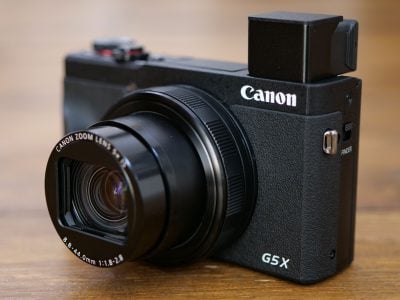Nikon D60
-
-
Written by Gordon Laing
Nikon D60 versus Canon EOS 400D / XTi real-life noise
Nikon D60 Noise Reduction comparison
Noise Reduction is Off by default on the D60, but still applied at sensitivities of 1600 and 3200 ISO. Alternatively you can enable Noise Reduction which is then applied at sensitivities over 400 ISO and exposures longer than eight seconds. Below are examples taken with and without NR from 400 to 3200 ISO.
Judging from the crops below, the differences are certainly subtle, and even the most dedicated pixel peepers will find it hard to spot the effect of NR at 400 and 800 ISO. At 1600 and especially 3200 ISO though, the faint noise speckles on the samples without NR enabled have been slightly smeared out on those with NR, although again it’s a subtle difference. Either way, we’re pleased Nikon’s taken a hands-off approach on noise reduction, instead preferring to leave the recorded detail present and giving you the chance to reduce it more effectively in software later if desired.
Now for more real-life examples across its sensitivity range, including several in low light, check out our Nikon D60 sample images page.
Nikon D60 (NR off – default) |
Nikon D60 (NR on) | |
 |
 | |
400 ISO |
400 ISO | |
 |
 | |
800 ISO |
800 ISO | |
 |
 | |
1600 ISO |
1600 ISO | |
 |
 | |
Hi1 (3200 ISO) |
Hi1 (3200 ISO) | |
To compare noise levels under real-life conditions we shot this scene with the Nikon D60 and the Canon EOS 400D / XTi within a few moments of each other using each of their ISO settings in Aperture Priority mode. Both cameras were fitted with their respective kit lenses, set to f8 and adjusted to deliver the same field of view. The image left was taken with the Nikon D60 at 28mm f8 and with a sensitivity of 100 ISO; the original JPEG measured 4.51 MB and noise reduction was off by default. The crops are taken from an area just below and to the left of the centre and presented here at 100%. |
Note: as on our first results page, the Canon EOS 400D / XTi underexposed this scene compared to the D60, so again here we’ve applied +2/3 EV exposure compensation to better match the Nikon results. The differences in colour and tone below are down to each camera’s default image processing styles, with the D60 boosting many parameters for punchier (albeit sometimes unreal-looking) photos.
Like the D40x before it, the D60 exhibits respectable results across its sensitivity range. Judging from the crops below, there’s only a very slight drop in quality and detail at 400 ISO and another at 800 ISO. At 1600 ISO, noise is unsurprisingly creeping in, although there’s still more fine detail than the Canon 400D / XTi at the same sensitivity. Finally, the 3200 ISO sample has quite noticeable noise, but it’s still quite usable reproduced at smaller sizes.
All in all, it’s a decent performance from the D60 and its EXPEED image processor, and we certainly prefer the default strategy of applying no (or minimal) noise reduction. The D60 does however have a noise reduction option, so to see how it impacts image quality, scroll to the bottom of this page. Or to see more real-life examples across its sensitivity range including several taken under low light, check out our Nikon D60 sample images page.
Nikon D60 |
Canon EOS 400D / Rebel XTi | |
 |
 | |
100 ISO |
100 ISO | |
 |
 | |
200 ISO |
200 ISO | |
 |
 | |
400 ISO |
400 ISO | |
 |
 | |
800 ISO |
800 ISO | |
 |
 | |
1600 ISO |
1600 ISO | |
 | ||
Hi1 (3200 ISO) |
3200 ISO not available |





